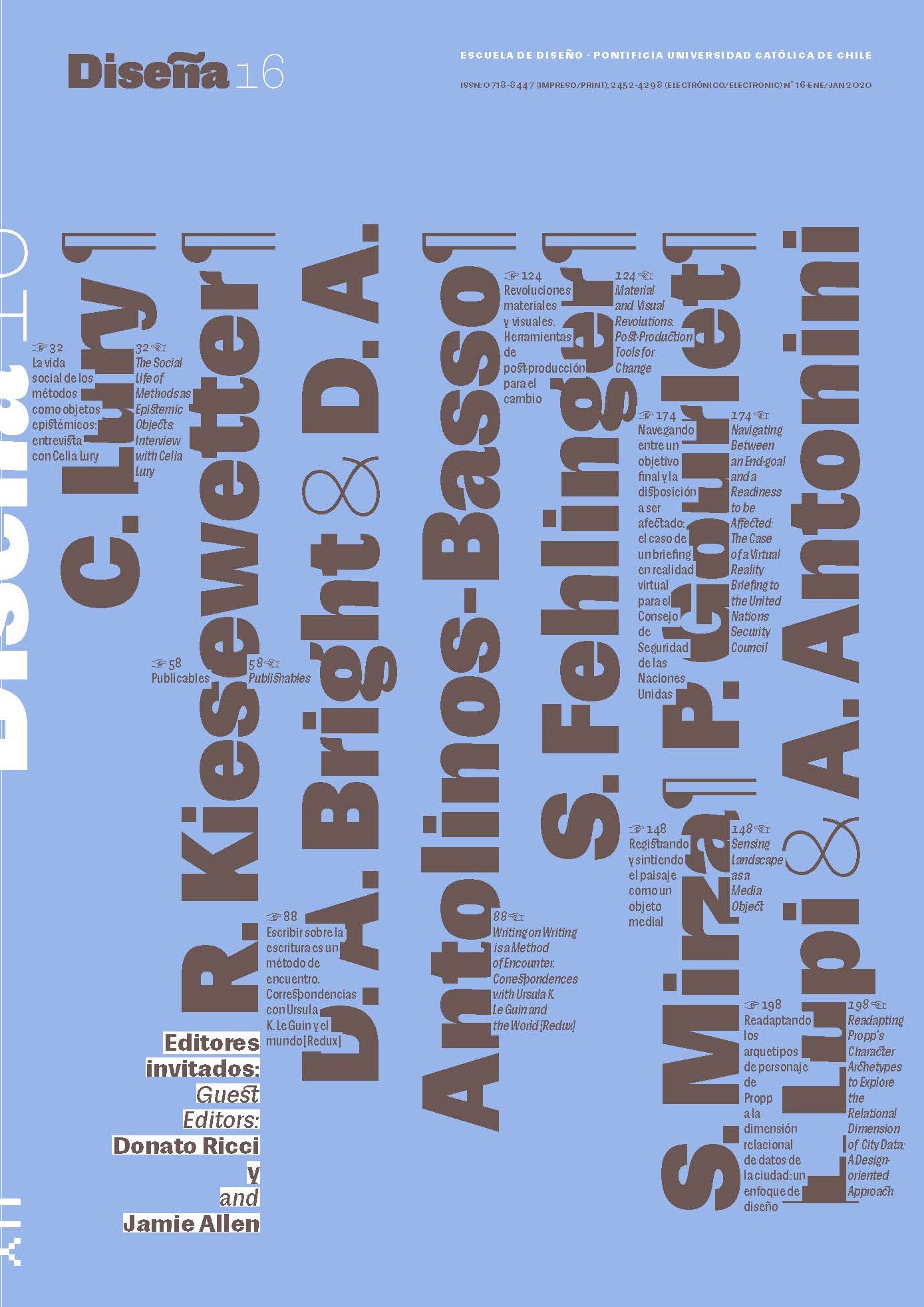Material and Visual Revolutions. Post-production Tools for Change
Main Article Content
Abstract
Since contemporary Western visual culture constitutes its reality in images, reality can be post-produced through editing techniques — as artist and writer Hito Steyerl suggested. Departing from this hypothesis, this paper explores post-production as both a conceptual tool as well as a concrete design method and practice in order to change the Anthropocene’s actualities. It illustrates the assembling gesture of post-production as a tool of knowledge creation and presents furthermore the preconditions of a scenario with the capacity to alternate already post-produced contemporary worlds. The ongoing project New Weather TV focuses on the production, diffusion, and reception of the Anthropocene through the image. In considers that, given that the Earth has been transformed into a television studio, a design studio, weather is an everyday screen practice that incorporates modern and Anthropocene ideologies into our daily realities. The project aims to re-design the images of the weather report in order to perform non-colonial and non-Anthropocene attitudes via the technique of chroma keying.
Article Details

This work is licensed under a Creative Commons Attribution-ShareAlike 4.0 International license.
COPYRIGHT NOTICE
All contents of this electronic edition are distributed under the Creative Commons license of "Attribution-ShareAlike 4.0 Internacional" (CC-BY-SA). Any total or partial reproduction of the material must mention its origin.
The rights of the published images belong to their authors, who grant to Diseña the license for its use. The management of the permits and the authorization of the publication of the images (or of any material) that contains copyright and its consequent rights of reproduction in this publication is the sole responsibility of the authors of the articles.

